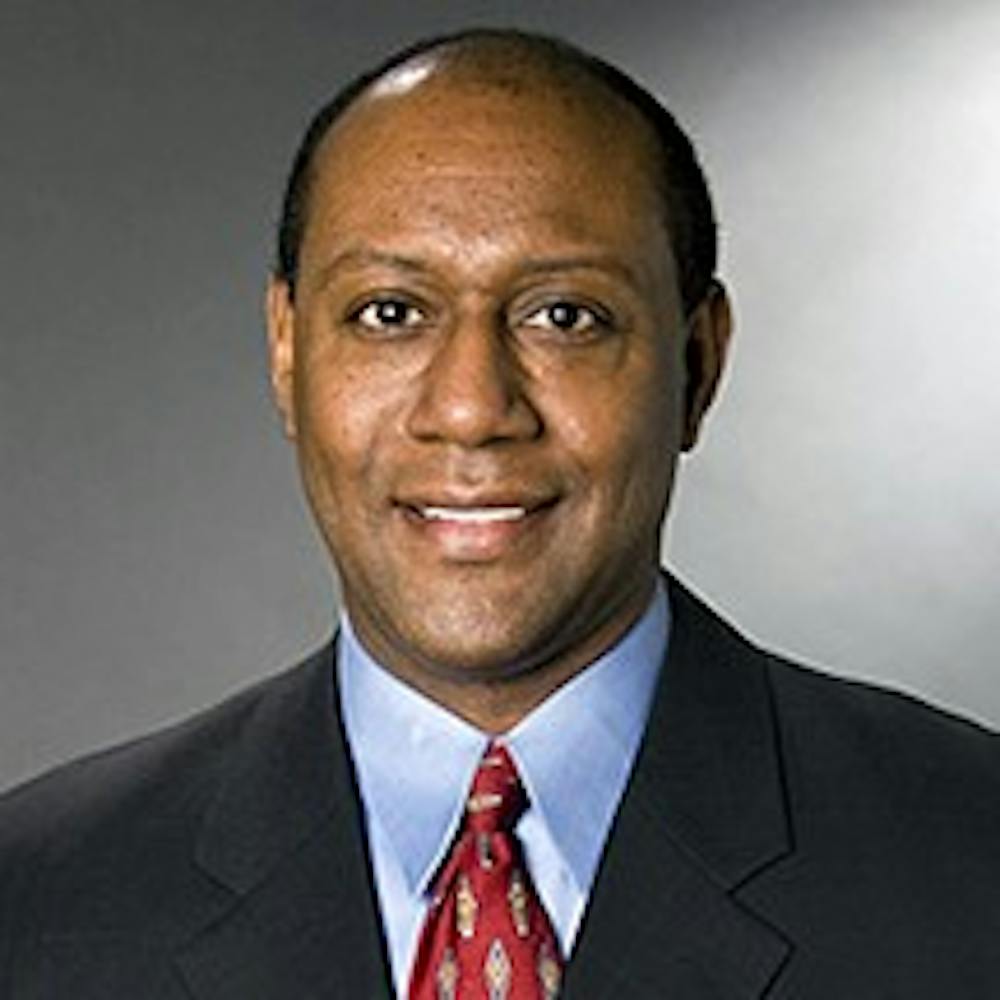We live in a football-crazed nation. There’s no denying it.
Earlier this month, a record-breaking 114.4 million people tuned into watch to watch Super Bowl XLIX, making it the most-watched television program in American history. But America’s most popular sport has dealt with a bit of a crisis over the last few years as the issue of concussions and head injuries associated with playing football has come to the forefront.
ESPN is one of several media outlets that has taken an interest in the matter of the issue of concussions, and Dwayne Bray is one man who knows a great deal about it. Bray serves as senior coordinating producer at ESPN and supervises the network’s Television Enterprise Reporting Unit.
As a part of the University of South Carolina’s Baldwin Business and Financial Journalism Lecture Series, Bray spoke this week on the research ESPN has done on brain injuries in football, how the NFL has handled the issue and the misinformation surrounding the issue.
The Daily Gamecock: Was there a single moment or certain injury to a certain player that made you realize that this concussion issue in particular needs to be investigated?
Dwayne Bray: I think you can look at any of the suicides. I think Dave Duerson was a big one, but ... I think Junior Seau was the one that resonated with most people because people don’t really remember Duerson from the ‘86 Bears, but they remember Junior Seau playing as recently as five, six years ago. So, anybody over the age of 16, 17, they remember seeing Junior Seau. So, that was the one I think prompted a bunch of action because it was a high-profile player who had played for the Chargers and then the Patriots. He was such an outgoing guy, so I think that was the one that really caught the attention of the National Football League and most of the media.
TDG: How much more physical do you think the game is now compared to what it used to be when guys like Duerson and Mike Webster, both of whom still suffered from brain injuries, played?
Bray: Well, certainly the game is physical. Is it more physical? I mean, you could extrapolate that it is because the players have not gotten taller, but they’ve gotten bigger. I mean, it’s an embarrassment if you’re in the NFL and you’re not at least 300 pounds, according to some players, if you’re on the line. So, if you look at the linemen, they’re all 300 pounds, but guys like Webster, they played at 245-250. So, has it gotten more dangerous? The players are bigger, the players are stronger and they’re lifting more. What are the reasons? I don’t know. Maybe it’s better training habits. You notice the players haven’t gotten taller. They just keep getting beefier and bigger, but they’re working out more. Some of the players back in the '60s, '70s, some of them actually had part-time jobs. These players are just full-time football players all year round.
TDG: Do you think that deaths like Seau’s are warning signs of more that could possibly come from players of this generation?
Bray: I think it’s more of a warning sign that everyday the media gets bigger and bigger, so more people are paying attention. So, anything that happens more recently than a long time ago is going to get more attention just because everybody’s a reporter today. Everybody has an [Instagram], Twitter, on the Vine or whatever, so I think that’s part of the reason that everything is getting more attention and it’s more magnified.
TDG: You've said the National Football League Players Association doesn’t know exactly what its stance is or what it wants regarding this issue. Why do you think they’re so conflicted?
Bray: Well, I think the NFLPA is probably researching a lot of things, but with some of the issues, we oftentimes go to the league and ask questions of the NFL, but we don’t always get the same answer from the NFLPA or maybe we’re not asking the same questions. But if you look at the issue of helmet sensors, the league has decided that it’s not going to use the helmet sensors, and if you read the story, you don’t really see any comment from the NFLPA, either pushing the helmet sensors or not pushing.
TDG: Do you think that the NFL has made progress in the way they approach brain injuries?
Bray: Yeah, I think that one of the big things is the concussion settlement. Right now, there’s a tentative settlement. There was a class action lawsuit against the league by a bunch of former players, and I think in the past few years, especially along the times of that settlement, that the league has made a number of changes in their policies which they say are designed to improve the game and make it safer.
TDG: You said that one of the bigger issues within this topic is misinformation or lack thereof. What’s maybe one or two things you think that not just the NFL, but even just football culture in general can do help make the general public aware?
Bray: Well, I think the NFL has started. They have some PSAs, public service announcements. You have to hit people where they live, so you have to go to TV shows they watch or magazines they read and you’ve got to place that information there. You can’t expect people to come to find it. You’ve got to go where they’re at and make sure that they’re aware of the information. Obviously people who watch our show “Outside the Lines” or “SportsCenter” are aware of the information because we’re reporting it. But what about the parents that don’t watch those shows? What are they reading? What are they looking at? I think the NFL and even journalists have to make sure the information is getting out there, as well.

